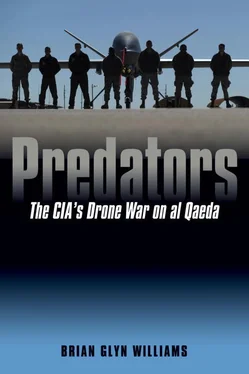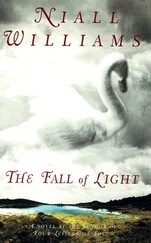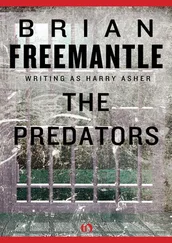Drawing on the presidential finding written for Bill Clinton in 1998, which allowed the CIA to assassinate bin Laden, the Bush administration concluded that executive orders banning assassination did not prevent the president from lawfully targeting terrorists for assassination. President Bush subsequently signed his own finding to that effect. At the time the Washington Post reported, “The CIA is reluctant to accept a broad grant of authority to hunt and kill U.S. enemies at its discretion, knowledgeable sources said. But the agency is willing and believes itself able to take the lives of terrorists designated by the president.” 8
On September 14, 2001, the Senate voted 98–0 and the House voted 420–1 to pass the Authorization for Use of Military Force (AUMF) as a joint resolution that “authorized the use of United States Armed Forces against those responsible for the recent attacks launched against the United States.” 9Bush and later Obama would argue that this gave them the mandate to hunt al Qaeda terrorists wherever they were found. Critics would point out the AUMF gave the military, not the civilian CIA, the authorization to go after terrorists, but for the Bush White House, this was mere semantics. 10It was time to launch a full-scale preemptive campaign of deterrence that would translate to a hunt for terrorists who were plotting the deaths of more Americans.
As the events were taking place in the fall of 2001, the U.S. secretary of state, Colin Powell, and his deputy, Richard Armitage, were engaged in a different mission that was to have equal ramifications for the upcoming war against the Taliban and al Qaeda. They were trying to convince the Pakistanis to turn on the Taliban proxies that they had nurtured since 1994 and join the United States in the newly declared global war on terror (GWOT) against them and al Qaeda. Talks on this delicate issue were facilitated by a visit to Washington, DC, by the head of the Pakistani ISI, Gen. Mahmoud Ahmed, on the fateful day September 11, 2001. He saw for himself the way the stupendous destruction and loss of lives on that day had transformed the American officials around him. He reported this transformation back to his leader, Pakistani president Pervez Musharraf. It was clear from Ahmed’s report that the slaughter of three thousand people in Manhattan, Virginia, and Pennsylvania had changed the Americans much as the attack on Pearl Harbor had in 1941. Ahmed detected a newfound determination to wage war against al Qaeda by all means possible.
Although President Musharraf and the Pakistani leadership were distrustful of the Americans, who had previously sanctioned them for building nuclear weapons under the Pressler Amendment, they were given an offer they could not refuse. If they agreed to join the newly belligerent Americans, the United States would provide them with billions of dollars in aid known as Coalition Support Funds. Washington would also lift the previously imposed sanctions and help arm the Pakistanis. If they did not join the Americans, they would be declared a state sponsor of terrorism, and economic sanctions would be leveled against them.
President Musharraf put his finger to the wind and sensed that it was blowing against the doomed Taliban regime and its terrorist allies. Armitage had told the Pakistanis, “You are either 100 percent with us or 100 percent against us—there is no grey area.” 11The world’s lone remaining superpower and its powerful North Atlantic Treaty Organization (NATO) allies were clearly going to go to war against the mullahs in Afghanistan. Musharraf’s money was on the United Nations (UN)–sanctioned American-led NATO alliance. For this reason he chose to drastically alter his country’s foreign policy vis-à-vis its Taliban allies. Pakistan was now “with” the Americans and would become the United States’ most important strategic partner in the upcoming war in Afghanistan.
Such a drastic redirection of foreign policy was not easy for Musharraf to carry out. After a heated meeting with his top generals and the firing of those who wanted to stand by their Taliban surrogates, Musharraf finally agreed to one of the Americans’ most important requests: the right of “blanket over-flight and landing.” 12Among the Pakistanis’ first actions in their new alliance with the distrusted Americans was to give the U.S. military the right to use several intermediate staging bases located in the province of Baluchistan, at Jacobabad, Pasni, Dalbandin, and Shamsi. Later, two of these air bases, at Jacobabad and Shamsi, would be shown to have been used by Predator drones. There were also rumors that U.S. drones were flying from a Pakistani base at Ghazi.
It can be surmised that the Air Force and CIA flew drones into these bases in time for the October 2001 attack on the Taliban of Afghanistan, that is, the beginning of Operation Enduring Freedom. Only by understanding this important American-led operation and the course of the war on the Taliban and al Qaeda can one understand the CIA’s subsequent drone air campaign against the Taliban in the FATA. Events in this little-studied operation led to the development of a terrorist-insurgent sanctuary in Pakistan’s autonomous tribal agencies that continues unabated to this day. The existence of these safe havens in the Pakistani tribal zones led to the commencement of the CIA’s post-2004 drone war in Pakistan.
Operation Enduring Freedom began on October 7, 2001, with an airborne campaign. Having achieved air supremacy in just a few days the United States and its Coalition allies then began to bomb Taliban positions throughout Afghanistan. 13
At this time a legendary anti-Taliban Pashtun mujahideen leader named Abdul Haq sneaked into Afghanistan to try leading a rebellion against the Taliban in the Pashtun south. Unfortunately, his small group of followers was ambushed by the Taliban and took heavy losses. As the Taliban closed in on him, Abdul Haq desperately radioed U.S. Central Command for help. The Americans responded by sending an armed Predator drone to attack the Taliban. But before the slow-moving drone could reach Haq, the Taliban overwhelmed him and captured him and his followers. The Predator arrived subsequently and fired on a Taliban convoy at the scene of the capture, but it was too late to save the doomed leader. 14Haq was tortured and then hung by the Taliban.
America’s air war was not going well on other fronts either. As the U.S. Air Force, Navy, and Marines bombed the country, the Taliban simply dug in and appeared to be prepared to ride out the U.S.-led Coalition’s deadly air strikes. But the Coalition had plans to move on the ground as well. The U.S. Army’s Fifth Special Forces Group planned on using the anti-Taliban Northern Alliance as a proxy ground force. These Uzbek, Tajik, and Hazara opposition fighters, who had been pushed into small mountain sanctuaries in the northeast and central Hindu Kush Mountains, were all too happy to join the Special Forces in fighting their Pashtun-Taliban blood enemies.
Because the overlord of the Northern Alliance opposition, Massoud the Lion of Panjsher, had been killed by al Qaeda suicide bombers on September 9, 2001, the larger-than-life Uzbek leader Gen. Abdul Rashid Dostum took the lead in fighting the Taliban. In November 2001 the horse-riding Uzbeks joined with a U.S. Special Forces A-Team known as Tiger O2 and Air Force combat controllers in launching an offensive from their mountain enclave high in the Hindu Kush. 15Using a combination of medieval-style cavalry charges and precision-guided joint direct attack munition (JDAM) air strikes, the Uzbeks and Americans broke out of the mountains and seized the holy shrine town of Mazar i Sharif from the Taliban on November 9, 2001. 16
Dostum’s bold seizure of Afghanistan’s holiest spot struck panic into the heart of the Taliban. Their whole house of cards began to collapse from defections. By November 12 Kabul had fallen to the Northern Alliance, and the northern half of the country was soon thereafter liberated from the Pashtun-Taliban southerners. In Kabul crowds came out to kill stranded Arabs, shave off their own beards, and tentatively begin to discard their burqas.
Читать дальше












